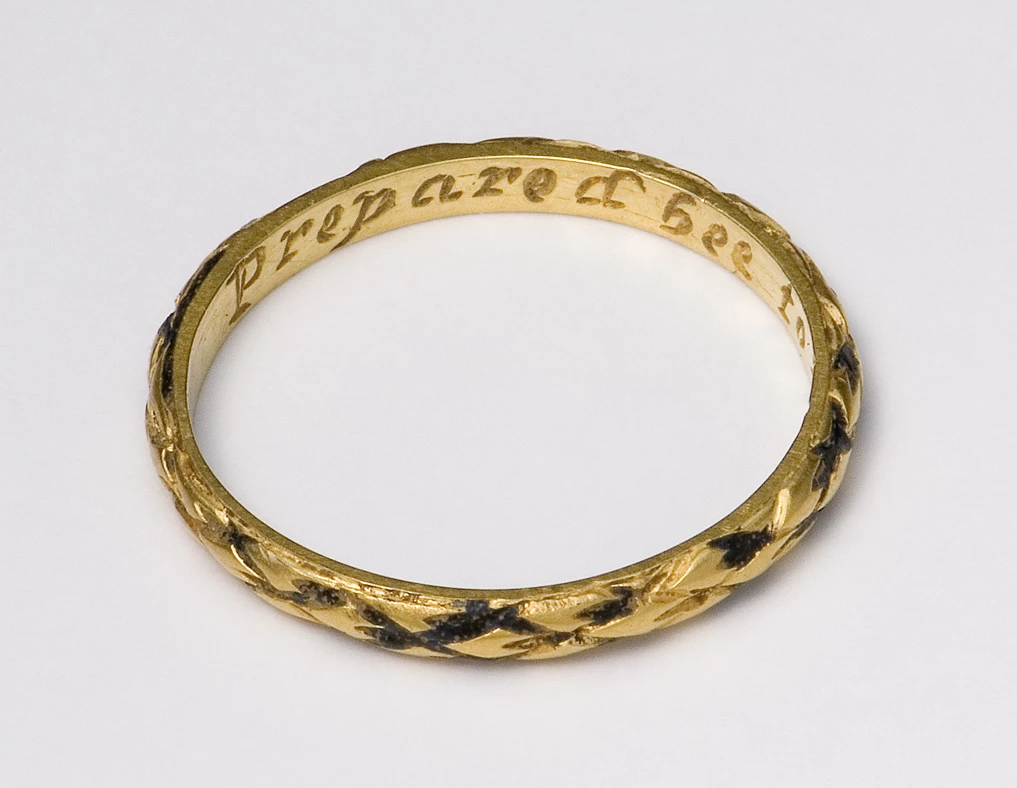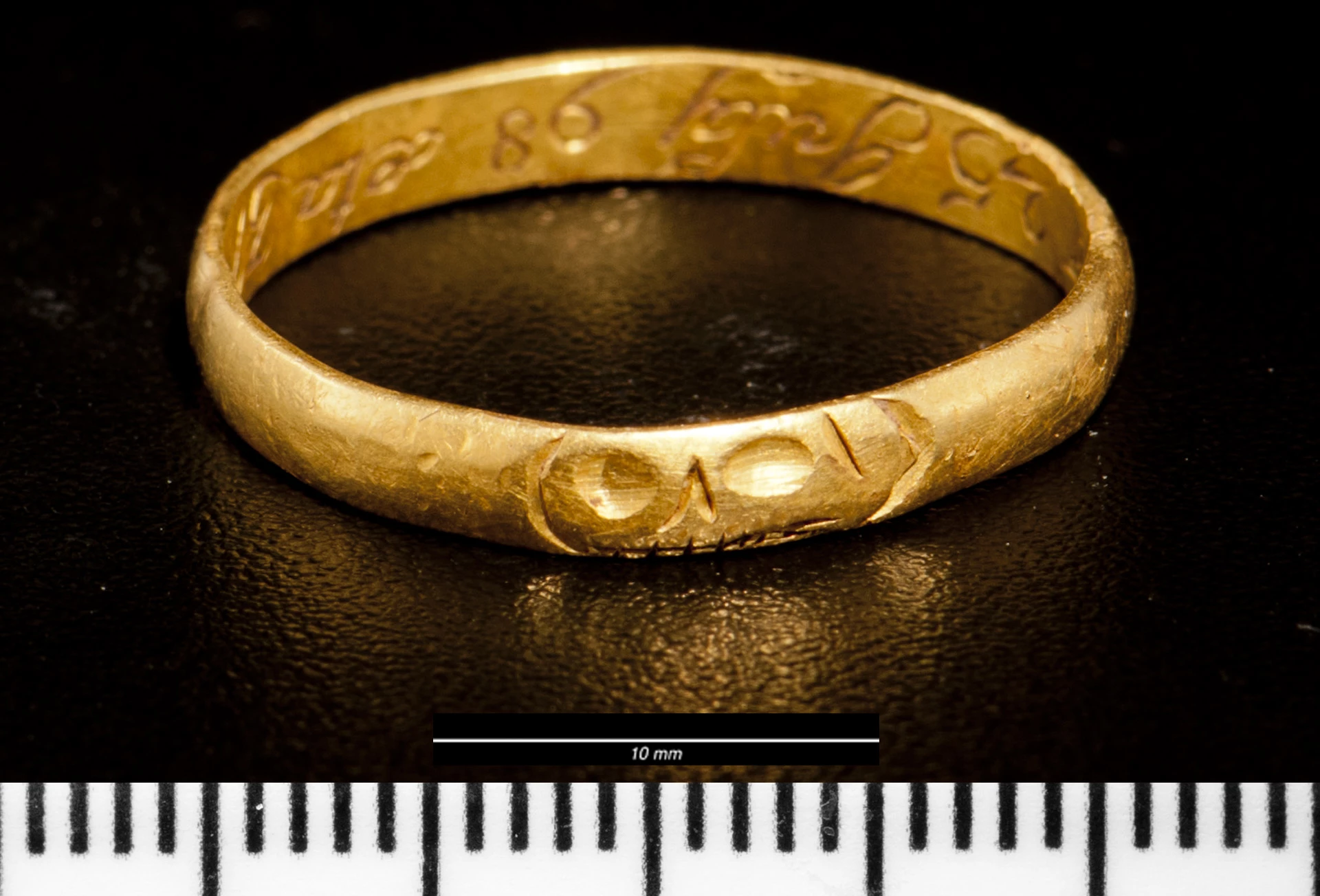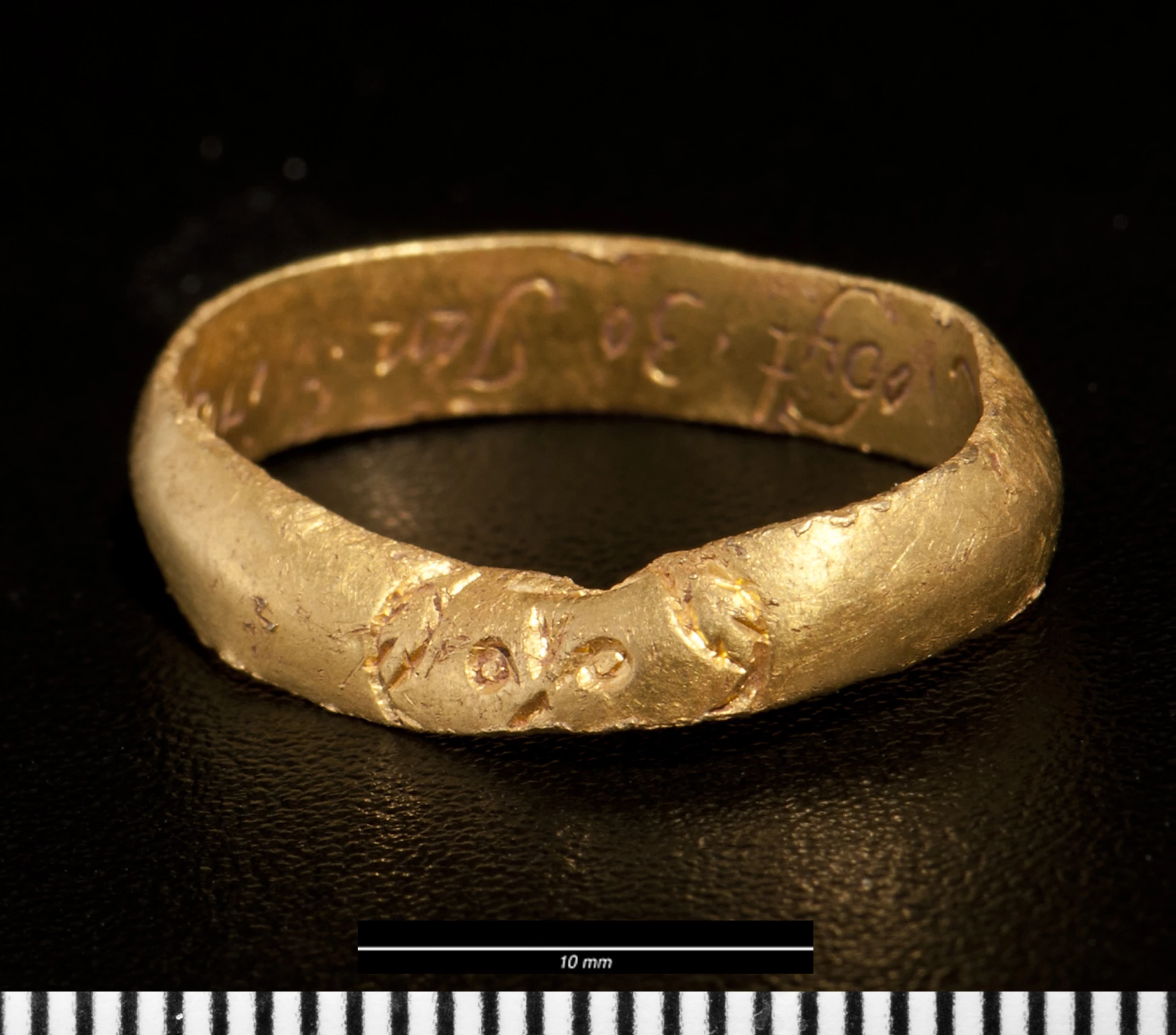Mourning Rings
Mourning ring from Pennard
Mourning ring from Kidwelly
Mourning ring from Hundleton, Pembrokeshire
Intense personal feelings were also encapsulated in mourning rings, but here it was the fractured relationship between the living and the dead that was at the heart of the ring’s purpose. In the Middle Ages the living retained some form of contact with the dead through the offering of prayers for the soul, but this practice was stopped at the Reformation and from the mid-16th century the dead could only be remembered, not helped. Mourning rings were sometimes distributed at funerals as a way of aiding this remembrance among the deceased’s family and friends. Often bearing their initials and date of death, they fuse the natural human need to keep in mind the presence of a dead loved one with the old tradition of the memento mori motif. This was a decorative reminder of the nearness of death, highly relevant to societies where epidemic disease, childbirth and simple infections were everyday dangers.
Often in the form of a skull or death’s head, memento mori motifs were common throughout many forms of late medieval and Early Modern material culture, and can be found in paintings and books, on tombstones and jewellery. In the 16th century portraits of Edward and Gawen Goodman of Ruthin, which can be seen in the National Museum of Wales, Cardiff, the men are wearing large gold mourning rings on their index fingers, both featuring a grinning skull. Intended as reminders of the brevity of life, they may also have had inscriptions with a more personal meaning, bringing to mind a specific dead loved one.
None of the mourning rings recently discovered by Welsh detectorists are quite as elaborate as those shown in the Goodman portraits, but the principles behind them are exactly the same. In October 2010 Mr R. Pitman unearthed a gold mourning ring at Pennard, Swansea. Dated to the late 17th century and decorated with a trellis-style pattern inlaid in dark blue enamel, the ring is one of several acquired by the Saving Treasures; Telling Stories project and is now in Swansea Museum. On its inner surface is inscribed ‘Prepared bee to follow me’ – a reminder that death could come at any time and that it was proper for a good Christian to be spiritually and mentally prepared for the inevitable. We can never know who the ‘me’ was: perhaps a dead loved one; perhaps Death himself.
Three other examples are clearer in this respect. They contain the initials and death dates of the people commemorated by the rings in Latin inscriptions on their inner surfaces. The oldest, found by Mr D. Raven in May 2013 at Kidwelly and now in Carmarthen Museum, records the death of ‘J. A. ob 25 July 98 aeta 37’ [J. A. died 25 July 1698, aged 37]. The outer surface is plain apart from an engraved death’s head and is very similar to another gold ring found in Hundleton, Pembrokeshire, by Mr K. Lunn in November 2013, now in Milford Haven Maritime and Heritage Museum. Here the death’s head is rather more crudely cut and the inscription records ‘A. E. obijt 30 Jan’ 17034’ [A. E. died 30 January 1703/4]1.
Another example, found further to the east in Caerwent, Monmouthshire, by Mr Colin Price in July 2011, is slightly different in form, having a floral pattern rather than a death’s head on the outside. The inscription marks the ring as commemorating ‘G. K. obt 26 March 1702’ [G. K. died 26 March 1702]. Scant though these details are, it is still possible to get a sense of the personal loss and grief the rings embody, and the need bereaved family members felt to sustain the remembrance of their loved ones long into the future.
1 The apparent confusion over the year of death is due to the old style of dating prior to the adoption of the Gregorian Calendar by England and Wales in 1752. Before this the new year officially began on 25 March, not 1 January. Therefore 31 December 1703 would have been followed by 1 January 1703, not 1 January 1704.



Comments - (2)
I have found two pieces of treasure gold mourning ring and a solid silver annular broach. I have contacted Peter at Hereford museum. But no treasure number has been sent.
Is there any advice you can help me please.
I have GPS of both finds
Gavin shide
I have found two pieces of treasure gold mourning ring and a solid silver annular broach. I have contacted Peter at Hereford museum. But no treasure number has been sent.
Is there any advice you can help me please.
I have GPS of both finds
Gavin shide